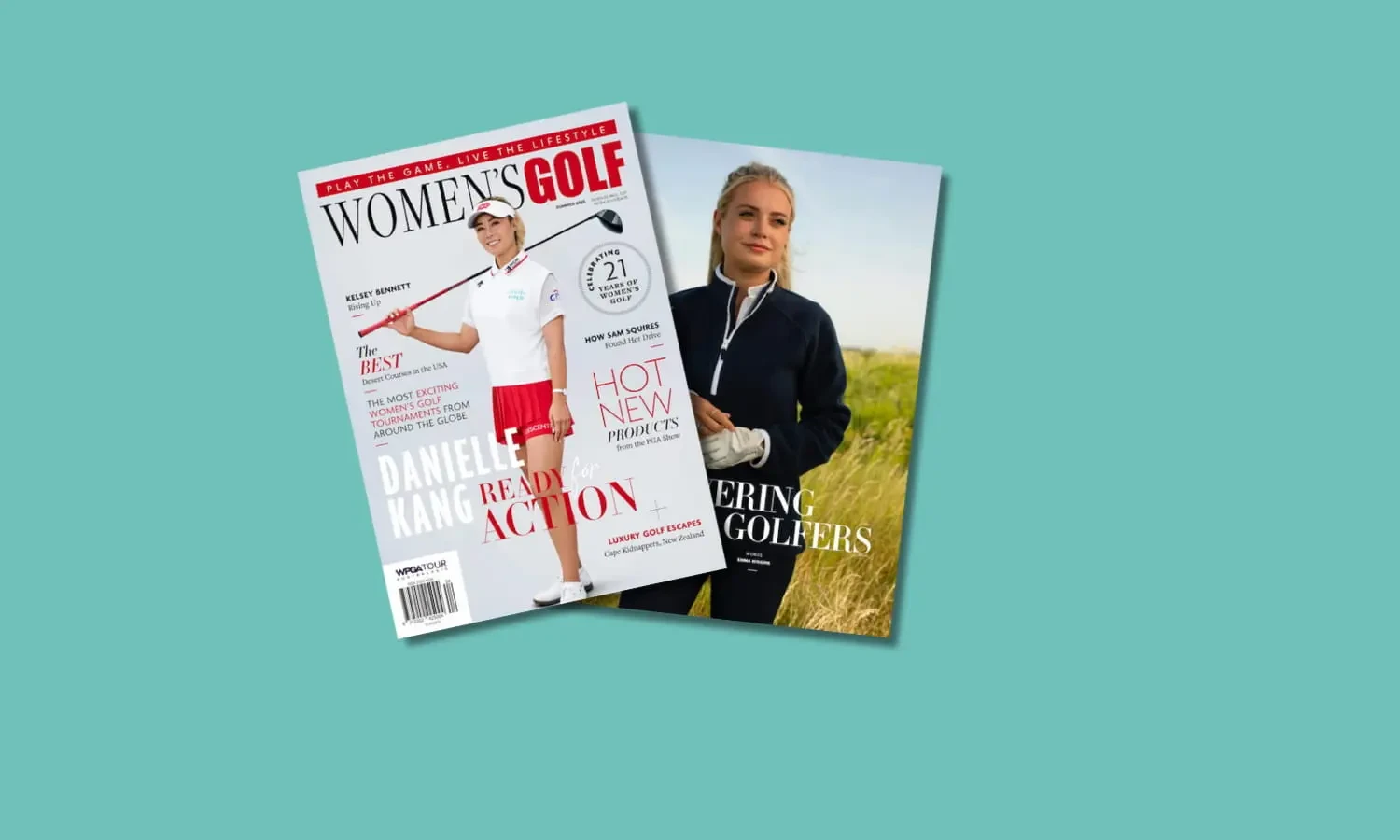CATEGORIES
- Latest News
- Interviews
- Golf Travel
- Features
- Juniors
- Competition
- Events
- Health
- Equipment
- Fashion
- Archive
INFORMATION
CURRENT ISSUE

SUBSCRIPTIONS



Fanny Sunesson holds a significant place in golf history as the first woman to win a men’s major championship as a caddie. However, the now retired looper always saw herself as a caddie first, rather than a pioneer.
A promising amateur player as a teenager in her homeland of Sweden, Sunesson’s legendary caddying career began in earnest when the DP World Tour (then European Tour) came to town, and she volunteered to work for one of the pros.
Standing alongside two other volunteers who would make names for themselves in professional golf, Annika and Charlotta Sorenstam, Sunesson picked up the bag of Brazilian, Jaime Gonzalez, and that eventually led to a job with Englishman, Howard Clark.
In late 1989, Sunesson’s career would take a monumental shift when hired by Sir Nick Faldo to begin work in 1990, including his defence of his title at The Masters at Augusta National. The Sunesson/Faldo combination would successfully keep the green jacket on the Englishman’s shoulders for another year, before the pair added The Open Championship and Claret Jug later in the same year, as well as two more major titles.
Clearly talented at far more than the traditional “show up, keep up and shut up” caddie mantra, some unfairly saw a female caddie as a novelty, whereas Sunesson saw herself simply as another of the vitally important loopers in the world of professional golf.
“I was just doing my job. I was a colleague. Most of the caddies were guys and I just did the same thing as they did but I was a girl. That was the only difference,” Sunesson said.
“I never thought of it as me being a pioneer. Of course, there were a few things that I noticed, such as not being able to go into the locker room.
“I might not be able to do certain things, but most of the time, I never thought of it. I was just me doing a job that I love.”
That job that she loved was one that Sunesson proved exceptional at.
Spending nearly the entire 1990s working for Faldo, the pair were regular fixtures at the majors, in the Ryder Cup and around the world, with the six-time major winner known at the time as one of the hardest workers on Tour.
While that may lead people to believe such a caddie role would be less than ideal, it was quite the opposite for Sunesson, who displayed an exceptional work ethic with a legendary dedication to preparation.
“I think that all the players I worked with worked hard,” she said. “Nick was obviously one of the best players around, and he was unbelievably impressive and a perfectionist. To work together with him was amazing.
“We worked well together because we were both perfectionists and I never thought of it as I worked long days. I walked the course beforehand. I checked the pins. I had every number in the book. I worked very hard, but I never thought of it. I just wanted to do it because I loved it.
“Caddying is easier today in one way because now the books are fantastic. You buy a book and you can go out and trust the book. You can see on a photograph what line the runout is. We had nothing like that. I made my own book because the book that you could buy didn't have all the information.”
Believing that working for a player who is struggling can be harder than a player on top of the world, Sunesson would go on to work for numerous other top players after finishing with the former World No. 1, Faldo, in 1999.
There was a brief stint with Sergio Garcia, a Players Championship victory with compatriot Henrik Stenson and time with Aussie Mark Hensby among others before Sunesson retired from full time caddying in 2011 due to a back injury, with a return alongside Adam Scott at the 2018 Open Championship.




Understandably, given her career spanned more than 30 years, 750 tournaments and 91 majors, picking favourite moments can prove difficult,
yet much like the players she helped, it is the big events that stand out to Sunesson.
“Augusta is extremely special to me. I just love being there,” Sunesson said. “First time I was there in 1990, Nick's defending and we ended up winning it, that was very special.
“Later in the year, St. Andrews, The Home of Golf, I was sitting talking to two caddies who unfortunately are no longer with us (Greg Rita and Bruce Edwards), about this place, how magical it was, and imagine being the caddie of the winner.
“Little did I know that I was going to be the one. So those two are special, and then when we won the Ryder Cup in America (1995 at Oak Hill), and then I've got to say the players with Henrik.”
Although her work with Faldo is perhaps what Sunesson is best known for, her mention of Stenson offers a window into the relationship of the pair who now run a junior golf tournament together at home in Sweden.
Sunesson’s work with the 2016 Open Champion later in her caddying career preceded her current role as a mental and performance coach.
Working with players like Martin Kaymer during his run to World No.1, Sunesson’s coaching is not limited to golfers, or even elite players. The retired caddie is also regularly engaged by football teams, and this year was a part of the BMW Golf Cup World Final in South Africa.
Played by amateurs from around the world, the BMW Golf Cup allows contestants to experience the atmosphere and infrastructure of a professional event, with Sunesson’s insights from years inside the ropes a truly once in a lifetime experience.
“I often get the question, do you only coach professionals or do I only want to coach elite players? No, is the answer. I want to coach someone who wants to enjoy their golf more, or have more fun or become a better golfer,” she said at Fancourt in South Africa that week.
“The other day I had a person come to my class and tell me, ‘Oh God, I’ve got to just tell you, I tried what I learned from you yesterday and it was much better and it worked’.
“I'm so grateful to be able to help someone like that. It's a very special week.”
Caddying for nine-time major winner, Gary Player, during a clinic that week was also memorable. The variation between the physically demanding job of caddying as opposed to the brain powered work of coaching might seem vastly different; however, the caddie to coach transition makes a great deal of sense to Sunesson.
“Coaching, I think it's very rewarding when you find something for that person, if it's a golf player or a football player, and that person can use that for the rest of their career and something clicks, that's really cool.
“When you're caddying, you are coaching. It's just you are coaching right there, right now.”
And for those pondering following the footsteps of Sunesson ‘the caddie’, her words as Sunesson ‘the coach’ provide an insight to her success at both.
“It's a good opportunity to see the world and it's a great job. You're outside and you’re involved in a sport that you love. I believe you've got to love it if you're going to be involved in it.”